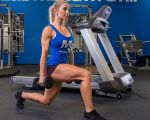- 1-Why-Track-Calories-and-Macros
- 2-Understanding-Macronutrients-and-Their-Role
- 3-Choosing-the-Right-Tools-for-Tracking-Calories-and-Macros
- 4-Tips-for-Accurate-Calorie-Counting
- 5-Adjusting-Macros-Based-on-Your-Fitness-Goals
- 6-Overcoming-Challenges-in-Nutrition-Tracking
1. Why Track Calories and Macros
Tracking calories and macronutrients (carbohydrates, proteins, and fats) provides a clear understanding of what you consume daily, enabling more precise control over your diet. Whether your goal is weight loss, muscle gain, or maintenance, monitoring these numbers helps align your eating habits with your fitness objectives.
Many people find that tracking improves awareness and accountability, leading to better food choices and consistent progress.
2. Understanding Macronutrients and Their Role
Macronutrients serve as the building blocks of nutrition. Proteins support muscle repair and growth, carbohydrates provide energy, and fats contribute to hormone production and cellular health. Balancing these macronutrients according to individual needs is key to achieving desired body composition and performance.
For example, athletes may require higher protein intake for muscle recovery, while those focusing on endurance might prioritize carbohydrates. Learning how each macro affects your body empowers you to tailor your diet effectively.
3. Choosing the Right Tools for Tracking Calories and Macros
Today’s technology offers numerous apps and tools that simplify calorie and macro tracking. Apps like MyFitnessPal, Cronometer, and Lose It! provide extensive food databases, barcode scanners, and personalized goal setting. Selecting a user-friendly app that fits your lifestyle encourages consistency.
Additionally, food scales and measuring cups enhance portion accuracy, reducing guesswork and improving data quality.
4. Tips for Accurate Calorie Counting
Accuracy is crucial for effective tracking. Start by weighing and measuring your food instead of relying on estimates. Pay attention to cooking methods, as added oils and sauces can increase calorie content.
Keep a detailed food diary and log every meal and snack promptly to avoid omissions. Reading nutrition labels carefully also helps in identifying hidden calories and macros.
5. Adjusting Macros Based on Your Fitness Goals
Your macro targets should reflect your goals. For weight loss, a slight calorie deficit with balanced macros supports fat loss while preserving muscle. For muscle gain, increased protein and calorie intake are essential.
Periodically reassess your progress and tweak macros to prevent plateaus and align with changes in activity level or body composition.
6. Overcoming Challenges in Nutrition Tracking
Many face challenges like time constraints, social events, or food variety. Simplify tracking by meal prepping, planning ahead, and allowing occasional flexibility to avoid burnout.
Remember, tracking is a tool for guidance, not perfection. Staying consistent while adapting to life’s realities creates sustainable habits.
For those seeking expert guidance, tools, and products to support your nutrition tracking journey, Fitness offers a comprehensive range of resources tailored to your needs.








